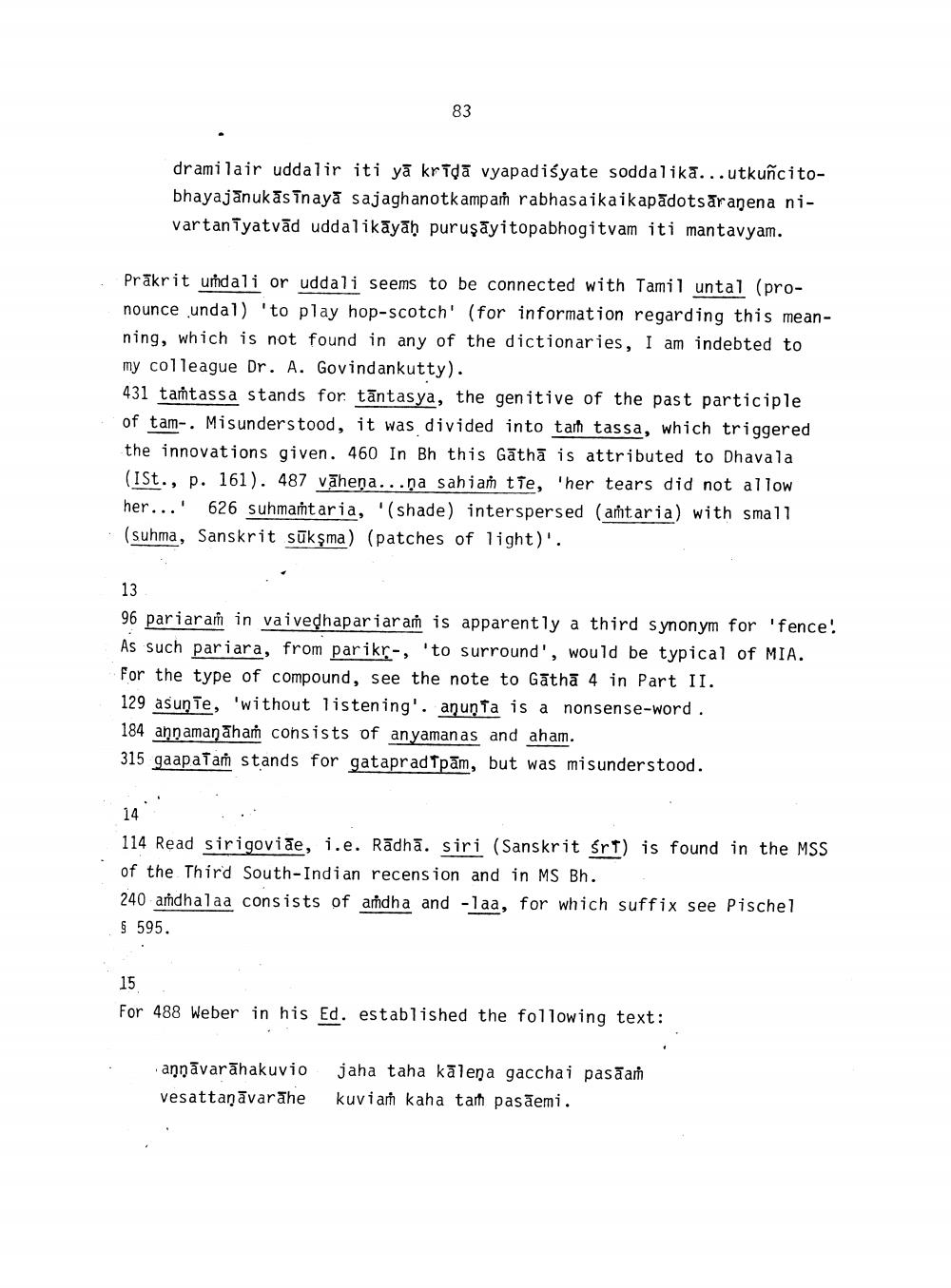________________
83
dramilair uddalir iti yā krīda vyapadiśyate soddalika...utkuñcitobhayajānukās īnayā sajaghanotkamp am rabhasaikaikapādotsāranena nivartaniyatvād uddalikāyāḥ puruşāyitopabhogitvam iti mantavyam.
Prākrit umali or uddali seems to be connected with Tamil untal (pronounce undal) 'to play hop-scotch' (for information regarding this meanning, which is not found in any of the dictionaries, I am indebted to my colleague Dr. A. Govindankutty). 431 tamtassa stands for tāntasya, the genitive of the past participle of tam-. Misunderstood, it was divided into tah tassa, which triggered the innovations given. 460 In Bh this Gāthā is attributed to Dhavala (ISt., p. 161). 487 vābeņa...ņa sahian tie, 'her tears did not allow her...' 626 suhmamtaria, '(shade) interspersed (antaria) with small (suhma, Sanskrit sūkşma) (patches of light)'.
13 96 pariaram in vaivedhapariar am is apparently a third synonym for 'fence! As such pariara, from parikr-, 'to surround', would be typical of MIA. For the type of compound, see the note to Gāthā 4 in Part II. 129 asuņte, 'without listening'. aņuņTa is a nonsense-word 184 ann amanāha consists of anyamanas and aham. 315 gaapaiam stands for gataprad Tpām, but was misunderstood.
14
114 Read sirigovide, i.e. Rādhā. siri (Sanskrit śrt) is found in the MSS of the Third South-Indian recension and in MS Bh. 240 amdhalaa consists of andha and -laa, for which suffix see Pischel $ 595.
15 For 488 Weber in his Ed. established the following text:
annāvarāhakuvio vesattaņāvarāhe
jaha taha kālena gacchai pasan kuvia kaha tah pasāemi.




